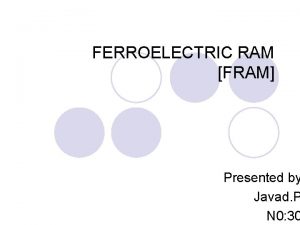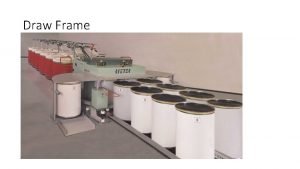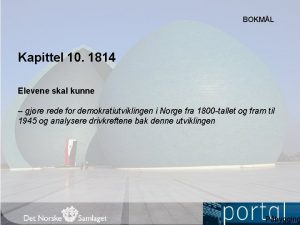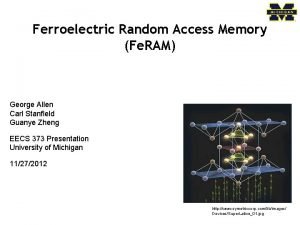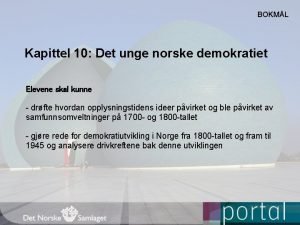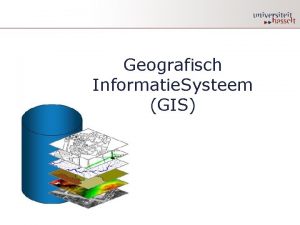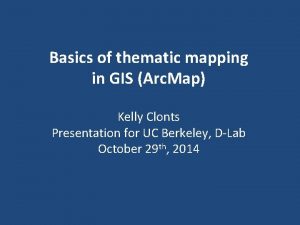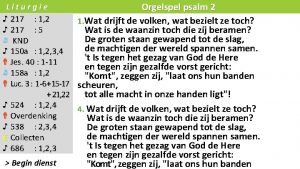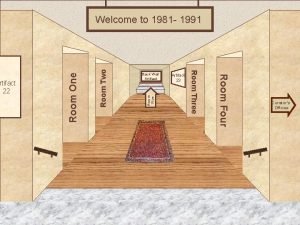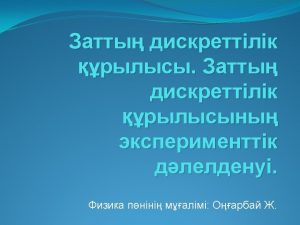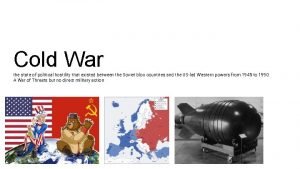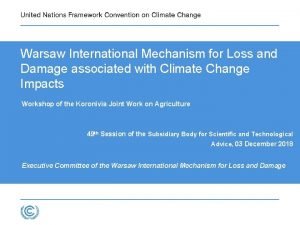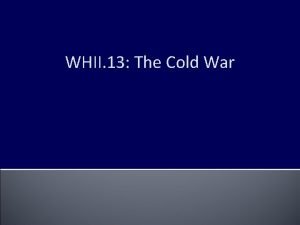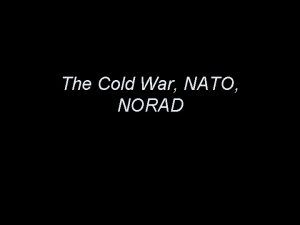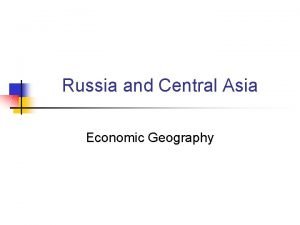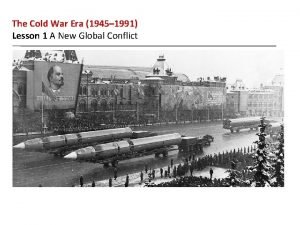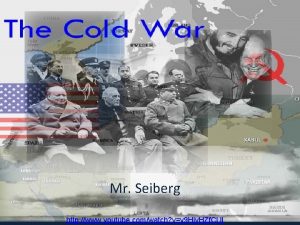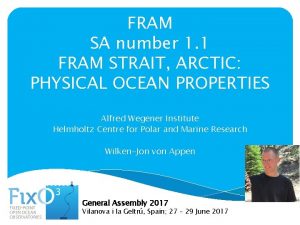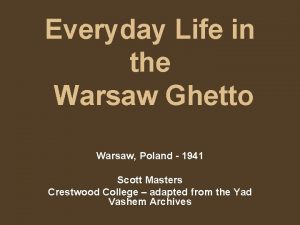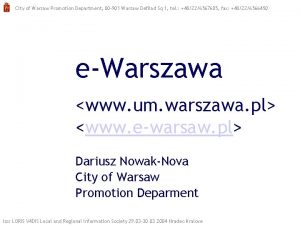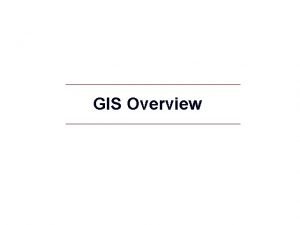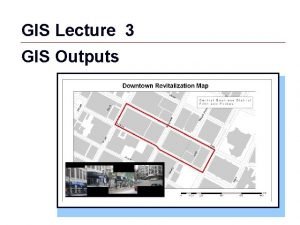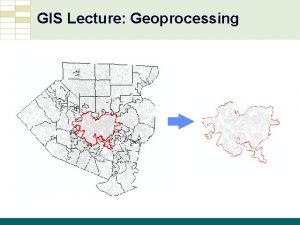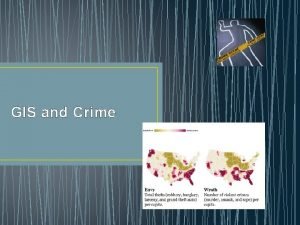Training Course for GIS Tool Fram Wat Warsaw

















![Arable. Ratio [%] Urban. Ratio TAKING COOPERATION FORWARD 18 Arable. Ratio [%] Urban. Ratio TAKING COOPERATION FORWARD 18](https://slidetodoc.com/presentation_image_h/0e86201300efa364103d576fb525859b/image-18.jpg)

![Precipitation variability within the annual period Pre_Var_a [-] Precipitation sum - average intra year Precipitation variability within the annual period Pre_Var_a [-] Precipitation sum - average intra year](https://slidetodoc.com/presentation_image_h/0e86201300efa364103d576fb525859b/image-20.jpg)
![Precipitation variability in the multiannual period Pre_Var_m [-] Precipitation variability in the multiannual period Precipitation variability in the multiannual period Pre_Var_m [-] Precipitation variability in the multiannual period](https://slidetodoc.com/presentation_image_h/0e86201300efa364103d576fb525859b/image-21.jpg)


![Frequency of precipitation lower than 50% Avg. P Prec. Freq. Low 50 [-] Frequency Frequency of precipitation lower than 50% Avg. P Prec. Freq. Low 50 [-] Frequency](https://slidetodoc.com/presentation_image_h/0e86201300efa364103d576fb525859b/image-24.jpg)
![Prec. Freq. Low 50 [-] Prec. Freq. Low 75 [-] !! Data pre-processing: • Prec. Freq. Low 50 [-] Prec. Freq. Low 75 [-] !! Data pre-processing: •](https://slidetodoc.com/presentation_image_h/0e86201300efa364103d576fb525859b/image-25.jpg)
![Groundwater Renewable Resources GRR [mm] Groundwater Renewable Resources Module. Get a ready map from Groundwater Renewable Resources GRR [mm] Groundwater Renewable Resources Module. Get a ready map from](https://slidetodoc.com/presentation_image_h/0e86201300efa364103d576fb525859b/image-26.jpg)
![GRR [mm] grr TAKING COOPERATION FORWARD 27 GRR [mm] grr TAKING COOPERATION FORWARD 27](https://slidetodoc.com/presentation_image_h/0e86201300efa364103d576fb525859b/image-27.jpg)
![Base Flow Index BFI [-] Base Flow Index - groundwater contribution to river flow; Base Flow Index BFI [-] Base Flow Index - groundwater contribution to river flow;](https://slidetodoc.com/presentation_image_h/0e86201300efa364103d576fb525859b/image-28.jpg)

![TAYSLO Index [m/km] Taylor-Schwartz measure of mainstream slope Input: DEM Digital Elevation Model [m TAYSLO Index [m/km] Taylor-Schwartz measure of mainstream slope Input: DEM Digital Elevation Model [m](https://slidetodoc.com/presentation_image_h/0e86201300efa364103d576fb525859b/image-30.jpg)























![FINAL VALORISATION priority part [%] high 32 medium 61 low 7 Low TAKING Medium FINAL VALORISATION priority part [%] high 32 medium 61 low 7 Low TAKING Medium](https://slidetodoc.com/presentation_image_h/0e86201300efa364103d576fb525859b/image-54.jpg)


- Slides: 56

Training Course for GIS Tool. Fram. Wat Warsaw, Poland, May 16 -17, 2018 Valorisation method and characteristic of water retention indicators Fram. Wat | Division of Hydrology and Water Resource WULS | Ignacy Kardel | Joanna O’Keeffe | Małgorzata Słapińska | Michał Jaglewicz | Mateusz Szcześniak | Tomasz Syroczyński | Dorota Pusłowska-Tyszewska | Wojciech Frątczak

VALORISATION METHOD and CHARACTERISTIC of WATER RETENTION INDICATORS Introduction Main objectives The valorisation procedure The indicators (& examples for the Polish pilot river catchment) Some important issues Conclusions and further steps TAKING COOPERATION FORWARD 2

INTRODUCTION – about HYDROLOGY & WM (1/2) P; Precipitation ET; Evapotranspiration D Surface storage D Surf. S F L O O D Q U A LY I T & Surface run-off; Q to Soil & Ground. Water; I DD RE OF UI GC HI TT S TAKING COOPERATION FORWARD 3

INTRODUCTION – about HYDROLOGY & WM (2/2) P ET DSurf. S Surface run-off; Q to Soil & Ground. Water; I Needs possibilities Environmental features Climat Geology & Topography Hydrogeology Landcover Hints from: Problems hydrology WM Analyses - supply, already done - floods, - quality protection Observed problems TAKING COOPERATION FORWARD 4

VALORISATION TOOL – main goals • • • Supporting planning of N/S/WRM Identifying areas of specific environmental features Identifying areas of WM problems Enhancing priority assignment Increasing flexibility of planning • • • GIS functionalities usability in variety of conditions (env. constraints, water uses) choice of indicators choice of spatial unit for planning purposes (detail/general) taking into account already existing measures TAKING COOPERATION FORWARD 5

THE PROCEDURE Getting started & input data GIS analysis 1 st part: data pre-processing Valorisation: GIS analysis 2 nd part Results report TAKING COOPERATION FORWARD 6

VALORISATION METHOD • • choosing a valorisation goal (2) choosing Spatial Planning Unit (SPU) and indicators dedicated to analysing the goal (3 -4) input of data necessary to calculate the indicators (5 -9) • • • Indicator vs. index • pre-processing of data using the selected method e. g. interpolation (10 -11) calculating indicators and their statistics for SPU (correlation matrix) (12 -15) choosing final set of indicators after analysing the correlation matrix (16) choosing the conversion method of indicator to index (17 -18) defining an aggregation method for indexes (19 -20) computing the aggregated values in SPU (21 -23) TAKING COOPERATION FORWARD 7

INDICATOR CHARACTERISTICS Purpose of N/S/WRM Draught (15) Flood (9 = 6+3 D) Water and ecosystems quality (6 = 5+1 F) General (35 = 9 +26 D F Q) 6 6 7 4 8 2 2 Topography & river system & land use Quality of water & ecosystems Hydrogeology & soils Hydrology Climate Indicator type 9 5+9 9 5 14 5 TAKING COOPERATION FORWARD 8

Option 1 Aim of User provided existing risk assessment/ assessment (drought protection actions plan, flood, Nitrate Vulnerable Zone, groundwater pollution risk) Map of atmospheric drought hazard (4 classes of hazard) Drought Option 2 Indicator short name Indicator Name Climatic Water Balance cwb Climatic Water Balance - average intra year variability cwb_Var_a Climatic Water Balance - variability cwb_Var_m in the multiannual period Precipitation variability in annual Pre_Var_a period - amplitude of monthly sum Precipitation variability in the Pre_Var_m multiannual period Frequency of precipitation lower Prec. Freq. Low 50 than 50% of the multiannual average (in the growing season) Map of soil (agricultural) drought Maximum soil water retention swr hazard (4 classes of hazard) Map of hydrogeological drought Groundwater Renewable Resources grr hazard (4 classes of hazard) Module Surface Runoff Index sri Type: stimulants, Unit Importance destimulants or nominals mm 1 destimulant - 2 destimulant - 1 stimulant mm 1 destimulant - 1 stimulant Base Flow Index bfi - 1 destimulant Mean low flow to mean high flow ratio Flow. Min. Max. Ratio - 1 destimulant 2 Map of hydrological drought Mean low flow to mean flow ratio Flow. Min. Avg. Ratio hazard (4 classes of hazard) Low mean flow to high mean flow Flow. Var. Ratio_m 2 ratio Water yield (specific runoff) for low Water. Yield. Min. Flow mm 2 flow in the multiannual period TAKING COOPERATION Water yield (specific runoff) for Water. Yield. Avg. Flow mm 1 mean flow in the multiannual period destimulant FORWARD destimulant 9

Climatic Water Balance cwb Climatic Water Balance - average intra year variability cwb_Var_a Maximum soil water retention Climatic Water Balance - variability cwb_Var_m in the multiannual period Groundwater Renewable Resources Module Precipitation variability in annual Pre_Var_a Surface Runoff Index period - amplitude of monthly sum Base Flow Index Precipitation variability in the Mean low flow to mean high flow ratio Pre_Var_m multiannual period Mean low flow to mean flow ratio Frequency of precipitation lower Low mean flow to high mean flow ratio Prec. Freq. Low 50 than 50% of the multiannual Water yield (specific runoff) for low flow average (in the growing season) in the multiannual period swr grr sri bfi Flow. Min. Max. Ratio Flow. Min. Avg. Ratio Flow. Var. Ratio_m Water. Yield. Min. Flow Water yield (specific runoff) for mean flow Water. Yield. Avg. Flow in the multiannual period TAKING COOPERATION FORWARD 10

Option 1 Aim of User provided existing risk assessment/ assessment (drought actions protection plan, flood, Nitrate Vulnerable Zone, groundwater pollution risk) Flood/Drought Flood Option 2 Indicator short name Indicator Name Type: stimulants, Unit Importance destimulants or nominals Surface Runoff Index sri - 1 stimulant Base Flow Index bfi - 1 destimulant Mean low flow to mean high flow ratio Flow. Min. Max. Ratio - 1 destimulant Flow. Max. Avg. Ratio - 2 stimulant Tay. SLO - 2 stimulant Flood. Risk. Area. Ratio % 1 stimulant Non. Forested. Ratio - 1 stimulant Ratio of high low flow to mean flow in the Flood Risk Management multiannual period Plans Taylor-Schwartz measure of mainstream slope Flood hazard zone area ratio Non forested area with a slope above 5% to SPU area ratio Lake catchment area to SPU area ratio TAKING COOPERATION FORWARD Lake. Catch. Ratio % 2 destimulant 11

Surface Runoff Index sri Base Flow Index Mean low flow to mean high flow ratio bfi Flow. Min. Max. Ratio of high low flow to mean flow Flow. Max. Avg. Ratio in the multiannual period Taylor-Schwartz measure of mainstream slope Tay. SLO Flood hazard zone area ratio Flood. Risk. Area. Ratio Non forested area with a slope above Non. Forested. Ratio 5% to SPU area ratio Lake catchment area to SPU area ratio Lake. Catch. Ratio TAKING COOPERATION FORWARD 12

Option 1 User provided existing risk Aim of assessment (drought protection assessment/ plan, flood, Nitrate Vulnerable actions Zone, groundwater pollution risk) Option 2 Indicator Name Drainage Density Flood/ Drought (the land use and topography group) Quality (High values indicate the need to develop NSWRM) Indicator short name Drainage. D Type: stimulants, Unit Importance destimulants or nominals km/ km 2 % 1 Topographic Wetness Index twi 1 Forested area to SPU area ratio Forest. Ratio 1 Lakes and reservoirs area to SPU Lake. Ratio % 1 area ratio Wetland area to SPU area ratio Wetlad. Ratio % 1 Orchards & vegetable farming area Orch. Veg. Ratio % 1 to SPU area ratio Urban area to SPU area ratio Urban. Ratio % 1 Arable area in SPU area ratio Arable. Ratio % 1 Reclaimed meadows and pastures Reclaimed. Ratio % 2 area to SPU area ratio Non forested areas with a slope Non. Forested. Ratio % 1 above 5% to SPU area ratio Arable lands in 20 -meters buffer around surface waters area to SPU Eco. Ara. Buf 20 m. Ratio area ratio 1 Semi-natural land cover types area Eco. Area. Ratio % to SPU area ratio 2 Number of semi-natural land cover % patches to total number of land Eco. Num. Ratio cover patches in SPU 2 Combination of number of semi. Eco. Combined 2 natural land cover patches and their area TAKING COOPERATION Bad morphological elements length Eco. Bad. RHS % 1 to total length of river in SPU stimulant destimulant stimulant stimulant destimulant FORWARD stimulant 13

Drainage Density Topographic Wetness Index Drainage. D twi Forested area to SPU area ratio Forest. Ratio Non forested areas with a slope above 5% to SPU Non. Forested. Ratio area ratio Lakes and reservoirs area to SPU area Lake. Ratio ratio Arable lands in 20 -meters buffer around surface Eco. Ara. Buf 20 m. Ratio waters area to SPU area ratio Wetland area to SPU area ratio Wetlad. Ratio Semi-natural land cover types area to SPU area Orchards & vegetable farming area to SPU Eco. Area. Ratio Orch. Veg. Ratio ratio area ratio Number of semi-natural land cover patches to total Urban area to SPU area ratio Urban. Ratio Eco. Num. Ratio number of land cover patches in SPU Arable area in SPU area ratio Arable. Ratio Combination of number of semi-natural land cover Reclaimed meadows and pastures area to Reclaimed. Ratio Eco. Combined patches and their area SPU area ratio Bad morphological elements length to total length Eco. Bad. RHS of river in SPU TAKING COOPERATION FORWARD 14

Forest. Ratio Proportional extent of catchment area mapped as forest. Forested area to SPU area ratio [-]. Input: Forest. Area (Forest layer, e. g. selection from CLC, codes: 311, 312, 313) Calculation method: Group: general, drought, flood and quality TAKING COOPERATION FORWARD 15

CLC 2012 POLYGON DATA CLC 2012 Forest layer Value for SPU (% of the area) I variant Surface Water Basins II variant Subbasins TAKING COOPERATION FORWARD 16

OTHER TOPOGRAPHIC RATIOS - analogical calculations to Forest. Ratio • Lake. Ratio - Lakes and reservoirs area to SPU area ratio [-] • Wetland. Ratio - Wetland area to SPU area ratio [-] • Orch. Veg. Ratio - Orchards & vegetable farming area to SPU area ratio [-] • Urban. Ratio - Urban area to SPU area ratio [-] • Arable. Ratio - Arable area to SPU area ratio [-] • Reclaimed. Ratio - Reclaimed meadows and pastures area to SPU area ratio; intersection of meadows and pastures (CLC code: 231) with ditches (buffer 100 m). TAKING COOPERATION FORWARD 17
![Arable Ratio Urban Ratio TAKING COOPERATION FORWARD 18 Arable. Ratio [%] Urban. Ratio TAKING COOPERATION FORWARD 18](https://slidetodoc.com/presentation_image_h/0e86201300efa364103d576fb525859b/image-18.jpg)
Arable. Ratio [%] Urban. Ratio TAKING COOPERATION FORWARD 18

Forest. Ratio Lake. Ratio Wetland. Ratio TAKING COOPERATION FORWARD Orch. Veg. Ratio 19
![Precipitation variability within the annual period PreVara Precipitation sum average intra year Precipitation variability within the annual period Pre_Var_a [-] Precipitation sum - average intra year](https://slidetodoc.com/presentation_image_h/0e86201300efa364103d576fb525859b/image-20.jpg)
Precipitation variability within the annual period Pre_Var_a [-] Precipitation sum - average intra year variability - amplitude of monthly sums (p. Max_i - p. Min_i) divided by mean monthly precipitation (within a year), averaged for the multiannual period Input: Prec. Weg. p. Avg. Weg, Prec. Weg. p. Min. Weg, Prec. Weg. p. Max. Weg Calculation method: Group: general and drought TAKING COOPERATION FORWARD 20
![Precipitation variability in the multiannual period PreVarm Precipitation variability in the multiannual period Precipitation variability in the multiannual period Pre_Var_m [-] Precipitation variability in the multiannual period](https://slidetodoc.com/presentation_image_h/0e86201300efa364103d576fb525859b/image-21.jpg)
Precipitation variability in the multiannual period Pre_Var_m [-] Precipitation variability in the multiannual period (inter year variability) - ratio of the lowest yearly sum of precipitation (for the growing season) and multiannual P average. Input: Prec. Weg. p. Avg. Weg, Prec. Weg. p. Min. Weg Calculation method: Group: general and drought TAKING COOPERATION FORWARD 21

PRECIPITATION point data, interpolation Data pre-processing: • interpolation – last step • computing precipitation characteristics from (daily/monthly) time series Pre_Var_m TAKING COOPERATION FORWARD Pre_Var_a 22

PRECIPITATION point data, interpolation Data pre-processing: • interpolation – last step • computing precipitation characteristics from (daily/monthly) time series Pre_Var_m TAKING COOPERATION FORWARD Pre_Var_a 23
![Frequency of precipitation lower than 50 Avg P Prec Freq Low 50 Frequency Frequency of precipitation lower than 50% Avg. P Prec. Freq. Low 50 [-] Frequency](https://slidetodoc.com/presentation_image_h/0e86201300efa364103d576fb525859b/image-24.jpg)
Frequency of precipitation lower than 50% Avg. P Prec. Freq. Low 50 [-] Frequency of precipitation lower than 50% of the multiannual average (during the growing season) Input: Prec. Weg. F 50. p. Freq. Low 50 Calculation method: Group: general and drought TAKING COOPERATION FORWARD 24
![Prec Freq Low 50 Prec Freq Low 75 Data preprocessing Prec. Freq. Low 50 [-] Prec. Freq. Low 75 [-] !! Data pre-processing: •](https://slidetodoc.com/presentation_image_h/0e86201300efa364103d576fb525859b/image-25.jpg)
Prec. Freq. Low 50 [-] Prec. Freq. Low 75 [-] !! Data pre-processing: • interpolation – last step • computing characteristics TAKING COOPERATION FORWARD 25
![Groundwater Renewable Resources GRR mm Groundwater Renewable Resources Module Get a ready map from Groundwater Renewable Resources GRR [mm] Groundwater Renewable Resources Module. Get a ready map from](https://slidetodoc.com/presentation_image_h/0e86201300efa364103d576fb525859b/image-26.jpg)
Groundwater Renewable Resources GRR [mm] Groundwater Renewable Resources Module. Get a ready map from the hydrogeological institute or calculate on a basis of hydrogeological map. Input: grr. Value Calculation method: Group: general and drought TAKING COOPERATION FORWARD 26
![GRR mm grr TAKING COOPERATION FORWARD 27 GRR [mm] grr TAKING COOPERATION FORWARD 27](https://slidetodoc.com/presentation_image_h/0e86201300efa364103d576fb525859b/image-27.jpg)
GRR [mm] grr TAKING COOPERATION FORWARD 27
![Base Flow Index BFI Base Flow Index groundwater contribution to river flow Base Flow Index BFI [-] Base Flow Index - groundwater contribution to river flow;](https://slidetodoc.com/presentation_image_h/0e86201300efa364103d576fb525859b/image-28.jpg)
Base Flow Index BFI [-] Base Flow Index - groundwater contribution to river flow; calculated for internal runoff from sub-basins. Calculation method: Group: general, drought and flood TAKING COOPERATION FORWARD 28

BFI Data pre-processing: • computing flow characteristics from (daily/monthly) time series • non-monitored catchments (experts, models) TAKING COOPERATION FORWARD 29
![TAYSLO Index mkm TaylorSchwartz measure of mainstream slope Input DEM Digital Elevation Model m TAYSLO Index [m/km] Taylor-Schwartz measure of mainstream slope Input: DEM Digital Elevation Model [m](https://slidetodoc.com/presentation_image_h/0e86201300efa364103d576fb525859b/image-30.jpg)
TAYSLO Index [m/km] Taylor-Schwartz measure of mainstream slope Input: DEM Digital Elevation Model [m a. s. l. ] Main River network divided into 500 m reaches Method: The Taylor-Schwartz slope, TAYSLO, is evaluated as a specially weighted average of the individual slopes, Si, over the N discrete elements. The relevant formula is: TAYSLO = ((∑(Si)^(-0. 5))/N)^2 where: ∑ from i=1 to i=N, S-Slope The set of TAYSLO 500 -metre elements to each gauged or ungauged node is also recorded in the geo-database as a set of individual GIS polylines. R analysis: raster package, slope package (slope, …) TAKING COOPERATION FORWARD 30

TAYSLO TAKING COOPERATION FORWARD 31

CWB CWB_var_a; _m TAKING COOPERATION FORWARD 32

Flood. Hazard. Area. Ratio TAKING COOPERATION FORWARD 33

Topographic Wetness Index or Compound Topographic Index (twi/cti) Input: DEM Digital Elevation Model [m a. s. l. ] Data format: raster Method: SAGA Topographic Wetness Index Based on a modified catchment area calculation, which does not treat the flow as a thin film as done in the calculation of catchment areas in conventional algorithms. R analysis: rsaga package (slope, catchment area, weights) TAKING COOPERATION FORWARD 34

TWI – Central Europe TAKING COOPERATION FORWARD 35

DEM Calculation of TWI Mean value for SPU I variant Surface Water Basins II variant Subbasins TAKING COOPERATION FORWARD 36

TWI TAKING COOPERATION FORWARD 37

SPATIAL PLANNING UNITS & DATA AVAILABILITY Different types of Spatial Planning Units: • Elementary basins (subcatchments) • Water bodies • Aggregated water bodies • Hydrologic Response Unit (according to SWAT hydrological model) GETTING STARTED AND DATA INPUT: Spatial scale of the analysis / data accuracy & availability TAKING COOPERATION FORWARD 38

SPU – Sub. Catchment TAKING COOPERATION FORWARD 39

SPU – Hydrological Response Unit TAKING COOPERATION FORWARD 40

INDICATOR INDEX Indicator in SPU Index in SPU TAKING COOPERATION FORWARD 41

FINAL VALORISATION (Weigthed) Sum of indexes Final result (priorities) TAKING COOPERATION FORWARD 42

CONCLUSIONS Usage of valorisation enables taking into account environmental conditions in the initial stage of planning process Possibility to chose indicators and SPU results in flexibility of the planning tool The method may be transferred to other regions, however, requires individual selection of indicators, indices and their ranges The tool is ment for plannning purposes - detailed analysis is required in design stage (environmental features, e-flows, water users). Quality of input data affects quality of the results. TAKING COOPERATION FORWARD 43

Training Course for GIS Tool. Fram. Wat Warsaw, Poland, May 16 -17, 2018 Valorisation method and characteristic of water retention indicators Fram. Wat | Division of Hydrology and Water Resource WULS | Ignacy Kardel | Joanna O’Keeffe | Małgorzata Słapińska | Michał Jaglewicz | Mateusz Szcześniak | Tomasz Syroczyński | Dorota Pusłowska-Tyszewska | Wojciech Frątczak

Non. Forest (slope>5%) TAKING COOPERATION FORWARD 45

Eco. Ara. Buf 20 m. Ratio TAKING COOPERATION FORWARD 46

Flow. Var_m Water. Yield. Avg. Flow, Water. Yield. Min. Flow Data pre-processing: • computing flow characteristics from (daily/monthly) time series • non-monitored catchments (experts, models) TAKING COOPERATION FORWARD 47

TAKING COOPERATION FORWARD 48

Example needs and possibilities water retention valorisation TAKING COOPERATION FORWARD Dr Ignacy Kardel 49

VALORISATION UNITS Valorisation was conducted of hydrographic units - integrated catchment areas of water bodies (141 Sc. CW) Thematic layers on a scale 1: 50000 TAKING COOPERATION FORWARD 50

LIST OF INDICATORS 12 indicators were selected characterized: climatic conditions: - atmospheric precipitation deficits - precipitation frequency lower of 50% of the long-term average hydrological conditions: - average low-flow from long period (outflow from 1 km 2) - flow ratio of the probability of exceeding the maximum equal to 1% of the average low-flow - surface areas intensively developed in the flooded zone hydrogeological conditions : - soil water retention - renewable groundwater resources module land development (participation in Sc. CW surface): - forest lakes and reservoirs urban areas orchards and vegetable crops arable land TAKING COOPERATION FORWARD 51

ADDITIONAL CRITERIA RESTRICTIONS FOR THE DEVELOPMENT OF SOME FORMS OF SMALL RETENTION Protected Areas Unblocking the river program for fish migration Surface water quality TAKING COOPERATION FORWARD 52

Atmospheric precipitation deficits TAKING COOPERATION FORWARD 53
![FINAL VALORISATION priority part high 32 medium 61 low 7 Low TAKING Medium FINAL VALORISATION priority part [%] high 32 medium 61 low 7 Low TAKING Medium](https://slidetodoc.com/presentation_image_h/0e86201300efa364103d576fb525859b/image-54.jpg)
FINAL VALORISATION priority part [%] high 32 medium 61 low 7 Low TAKING Medium Hight COOPERATION FORWARD 54

Example needs and possibilities water retention valorisation TAKING COOPERATION FORWARD Dr Ignacy Kardel 55

Name Department Project Acronym www. interreg-central. eu/acronym info@acronym. com +00 00 -00 facebook. com/Acronym linkedin. com/in/acronym twitter. com/acronym TAKING COOPERATION FORWARD 56
 Stratified and cluster sampling
Stratified and cluster sampling Fram (ferroelectrics ram)
Fram (ferroelectrics ram) Sampling in research definition
Sampling in research definition Fram museum
Fram museum Draw frame working principle
Draw frame working principle Kontinentalsystemet napoleon
Kontinentalsystemet napoleon Fram vs dram
Fram vs dram Fram vs eeprom
Fram vs eeprom Demokratiutvikling i norge fra 1800-tallet og fram til 1945
Demokratiutvikling i norge fra 1800-tallet og fram til 1945 Geografisch informatie systeem
Geografisch informatie systeem +gis +tool +thematic
+gis +tool +thematic Psalm 217
Psalm 217 When was the warsaw pact formed
When was the warsaw pact formed Warsaw culture trip
Warsaw culture trip Maria sklodowska was born in warsaw
Maria sklodowska was born in warsaw Warsaw university political science
Warsaw university political science Warsaw uprising
Warsaw uprising Satellite states cold war
Satellite states cold war 6056
6056 Nato warsaw pact
Nato warsaw pact Warsaw.cob.csuchico
Warsaw.cob.csuchico Warsaw pact countries
Warsaw pact countries Retirement planning warsaw
Retirement planning warsaw Warsaw pact countries
Warsaw pact countries What are russia natural resources
What are russia natural resources Warsaw
Warsaw Fbu.costa [email protected]
Fbu.costa [email protected] Warsaw pact countries map
Warsaw pact countries map 00-901 warszawa
00-901 warszawa One way the warsaw pact enforced its authority was by
One way the warsaw pact enforced its authority was by Warsaw pact
Warsaw pact Warsaw zoo map
Warsaw zoo map T junction in english bond
T junction in english bond Course title and course number
Course title and course number Chaine parallèle muscle
Chaine parallèle muscle Online class registration tool
Online class registration tool Preference matrix
Preference matrix Potter's wheel data cleaning tool
Potter's wheel data cleaning tool Kontinuitetshantering i praktiken
Kontinuitetshantering i praktiken Typiska novell drag
Typiska novell drag Tack för att ni lyssnade bild
Tack för att ni lyssnade bild Ekologiskt fotavtryck
Ekologiskt fotavtryck Varför kallas perioden 1918-1939 för mellankrigstiden
Varför kallas perioden 1918-1939 för mellankrigstiden En lathund för arbete med kontinuitetshantering
En lathund för arbete med kontinuitetshantering Underlag för särskild löneskatt på pensionskostnader
Underlag för särskild löneskatt på pensionskostnader Personlig tidbok fylla i
Personlig tidbok fylla i Sura för anatom
Sura för anatom Vad är densitet
Vad är densitet Datorkunskap för nybörjare
Datorkunskap för nybörjare Boverket ka
Boverket ka Tes debattartikel
Tes debattartikel Delegerande ledarskap
Delegerande ledarskap Nyckelkompetenser för livslångt lärande
Nyckelkompetenser för livslångt lärande Påbyggnader för flakfordon
Påbyggnader för flakfordon Kraft per area
Kraft per area Offentlig förvaltning
Offentlig förvaltning Urban torhamn
Urban torhamn

